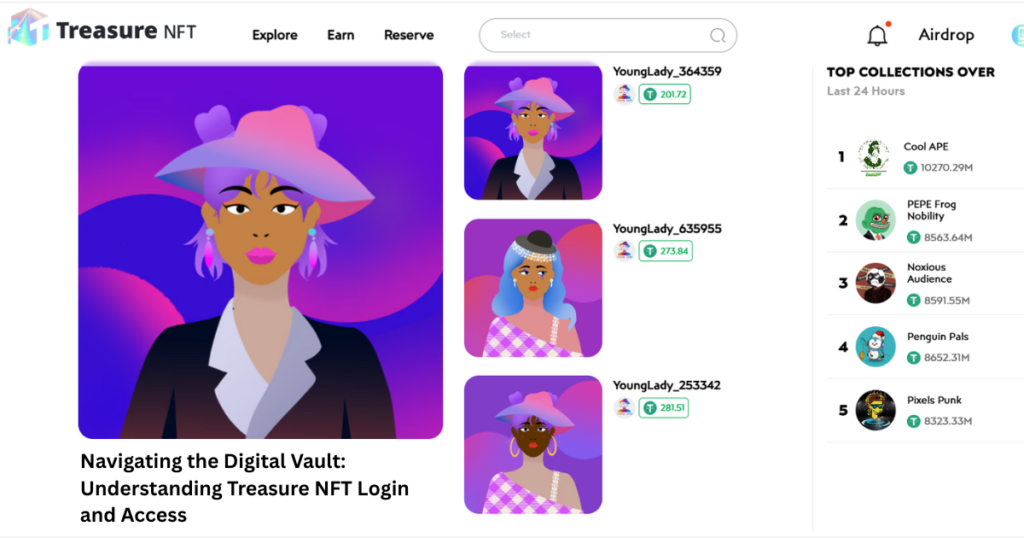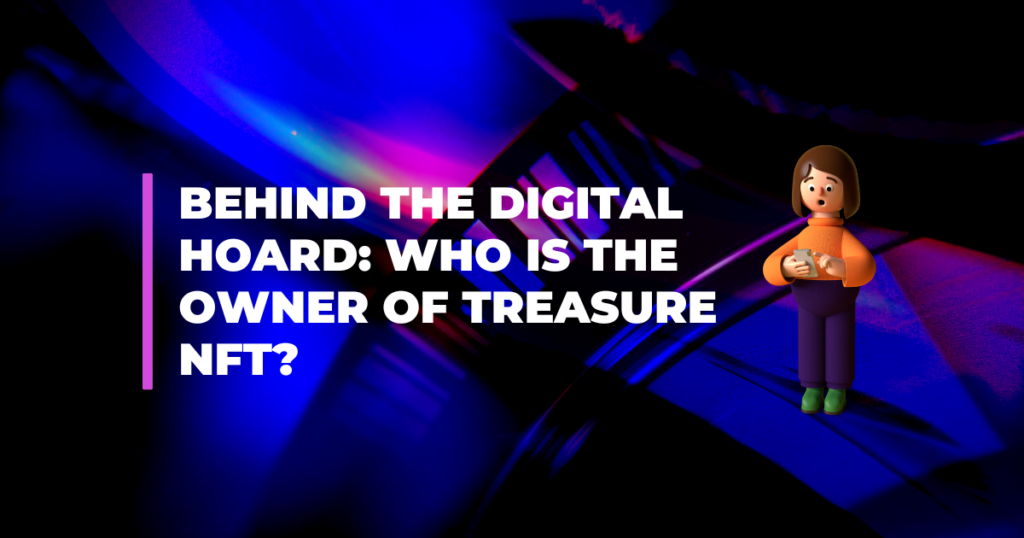The world of Non-Fungible Tokens (NFTs) continues to evolve, moving beyond simple digital collectibles into realms of interactive experiences and in-game utility. One fascinating development is the concept of NFT Treasure, which promises not just ownership of unique digital assets but also access to engaging ecosystems and potential rewards. If you’re intrigued by the idea of digital treasure hunts and the value locked within these tokens, you’ve come to the right place. This comprehensive guide will delve into the world of NFT Treasure, addressing your key questions about treasure nft login, whether treasure nft real or fake, what is nft treasure, the owner of treasure nft, and the treasure nft app, providing you with actionable insights into this exciting space.
Are you curious about how NFTs can represent more than just images? Are you looking for ways to engage with blockchain-based games and metaverses through unique digital assets? This article will explore the concept of NFT Treasure, guiding you through its potential, addressing common concerns, and helping you understand how to navigate this evolving landscape.
Decoding the Concept: What Exactly is NFT Treasure?
At its core, NFT Treasure refers to Non-Fungible Tokens that hold inherent utility or grant access to specific features, rewards, or experiences within a particular blockchain-based game or metaverse. Unlike purely collectible NFTs, NFT Treasure often acts as a key, a resource, or a valuable asset within a digital world, influencing gameplay, unlocking content, or providing economic benefits.
- Utility Beyond Aesthetics: The primary distinction of NFT Treasure is its functionality. It’s not just about owning a unique digital item; it’s about what that item does within its designated ecosystem.
- In-Game Assets: This can range from virtual land and powerful weapons to unique characters, rare resources, and access passes to exclusive events within a game.
- Metaverse Keys: In metaverse environments, NFT Treasure might represent ownership of virtual real estate, access to specific districts, or the ability to customize virtual spaces.
- Earning Potential: Some NFT Treasure can generate passive income within a game’s economy or be used to earn other valuable in-game assets or cryptocurrencies.
Navigating the Digital Vault: Understanding Treasure NFT Login and Access

For those looking to engage with specific NFT Treasure projects, understanding the login and access process is crucial. This typically revolves around connecting your cryptocurrency wallet to the platform or game associated with the NFT collection.
- Connecting Your Wallet: Most platforms require you to connect a compatible cryptocurrency wallet (like MetaMask, Trust Wallet, etc.) to verify ownership of your Treasure NFT.
- Platform-Specific Logins: Some projects might have their own dedicated websites or applications where you can log in using your connected wallet to view and interact with your NFT Treasure. This is often where you’ll find the treasure nft login or nft treasure login portals.
- In-Game Integration: If the NFT Treasure is part of a game, access and utility will likely be directly integrated within the game’s interface once your wallet is connected.
- Official Marketplaces: To acquire NFT Treasure, you’ll typically need to use NFT marketplaces that support the specific blockchain and collection.
Separating Fact from Fiction: Is Treasure NFT Real or Fake?
The question of whether treasure nft real or fake is a valid concern in the often-volatile world of NFTs. The authenticity and value of an NFT Treasure project depend heavily on several factors:
- Project Legitimacy: Research the team behind the project, their track record, and their long-term vision. Look for transparency and community engagement.
- Smart Contract Verification: Reputable NFT Treasure projects will have their smart contracts publicly verifiable on the blockchain. This ensures the authenticity and immutability of the NFTs.
- Utility and Ecosystem: A strong indicator of a legitimate NFT Treasure project is the existence of a functional and engaging ecosystem where the NFTs have genuine utility.
- Community Support: A vibrant and active community around an NFT Treasure project can also be a positive sign.
- Marketplace Listings: Check if the NFT Treasure collection is listed on reputable NFT marketplaces.
Be wary of projects that promise unrealistic returns or lack transparency. Thorough research is crucial before investing in any NFT Treasure.
Unpacking the Concept: What is the Treasure NFT App?
The term “treasure nft app” might refer to a specific application or platform associated with a particular NFT Treasure project. It could be:
- A Dedicated Game Application: If the NFT Treasure is integral to a game, the “treasure nft app” could be the game itself.
- A Management Dashboard: Some projects might have a dedicated app or web interface where holders can manage their NFT Treasure, claim rewards, or participate in governance.
- A Marketplace Integration: In some cases, the “treasure nft app” might refer to a specific NFT marketplace that heavily features or originates from a particular NFT Treasure ecosystem.
Without a specific project name, it’s difficult to pinpoint a single “treasure nft app.” Always refer to the official website and documentation of the NFT Treasure project you are interested in to find their designated applications or platforms.
Behind the Digital Hoard: Who is the Owner of Treasure NFT?

The “owner of Treasure NFT” is not a single individual or entity in the traditional sense. Ownership is distributed among the individuals and entities that hold the specific NFT Treasure tokens in their cryptocurrency wallets.
- Decentralized Ownership: One of the fundamental principles of NFTs is decentralized ownership. Each unique NFT Treasure has a recorded owner on the blockchain.
- Project Creators: The creators of the NFT Treasure project initially own the NFTs they mint. They then sell or distribute these NFTs to the wider community.
- Individual Collectors and Gamers: Once an NFT Treasure is purchased or earned, the ownership is transferred to the buyer’s or player’s cryptocurrency wallet.
- Community Governance: Some NFT Treasure projects might have decentralized autonomous organizations (DAOs) where token holders collectively have a say in the project’s future.
Therefore, the “owner of Treasure NFT” is the collective of individuals and entities holding these digital assets.
Navigating the Ecosystem: Exploring the Treasure NFT App (Hypothetical Example)
Let’s imagine a hypothetical game called “Crypto Explorers” where NFT Treasure represents unique artifacts that grant special abilities within the game. The “treasure nft app” in this scenario would likely be the “Crypto Explorers” game application itself.
| Feature within “Crypto Explorers” App | Functionality Related to NFT Treasure | Benefit for User |
| Artifact Inventory | Displays the NFT Treasure owned by the connected wallet. | Provides a clear overview of owned assets. |
| In-Game Marketplace | Allows players to buy, sell, and trade NFT Treasure with other players. | Facilitates a player-driven economy and asset liquidity. |
| Artifact Activation | Enables players to activate the unique abilities of their NFT Treasure. | Enhances gameplay and provides strategic advantages. |
| Reward Claiming | Allows players to claim rewards or earn new NFT Treasure through gameplay. | Incentivizes engagement and provides potential for earning valuable assets. |
In this example, the “treasure nft app” (the game) provides the interface for users to interact with their NFT Treasure.
Conclusion
NFT Treasure represents an exciting evolution in the world of Non-Fungible Tokens, moving beyond simple collectibles to offer tangible utility and engaging experiences within blockchain-based games and metaverses. By understanding the core concepts, navigating the login processes, discerning legitimate projects, and exploring the associated applications, you can confidently delve into the world of digital treasure hunts. Remember to conduct thorough research and approach this emerging space with a balanced perspective to unearth the true potential of NFT Treasure.
FAQs
Q: What are some examples of utility for NFT Treasure?
A: Utility can include in-game bonuses, access to exclusive content, governance rights, staking rewards, virtual land ownership, and the ability to earn in-game currency.
Q: How do I know if an NFT Treasure project is legitimate?
A: Look for transparent teams, verifiable smart contracts, a functional ecosystem, active community, and listings on reputable NFT marketplaces. Be wary of unrealistic promises.
Q: What cryptocurrency wallets are typically used for NFT Treasure?
A: Popular choices include MetaMask, Trust Wallet, and other wallets compatible with the blockchain on which the NFT Treasure is built (e.g., Ethereum, Polygon, Solana).
Q: Where can I buy and sell NFT Treasure?
A: You can typically find NFT Treasure on NFT marketplaces like OpenSea, Rarible, Magic Eden (for Solana), and others that support the specific collection.
Q: Is investing in NFT Treasure a good idea?
A: Investing in NFT Treasure, like any investment in the crypto and NFT space, carries risks. The value can be volatile. Conduct thorough research and understand the potential downsides before investing.
Q: How can I learn more about specific NFT Treasure projects?
A: The best way is to visit the official website of the project, read their whitepaper, join their community channels (Discord, Telegram), and follow their social media.
Read More: Educationbeing com | Veganov Trichy | WheonAI Business
